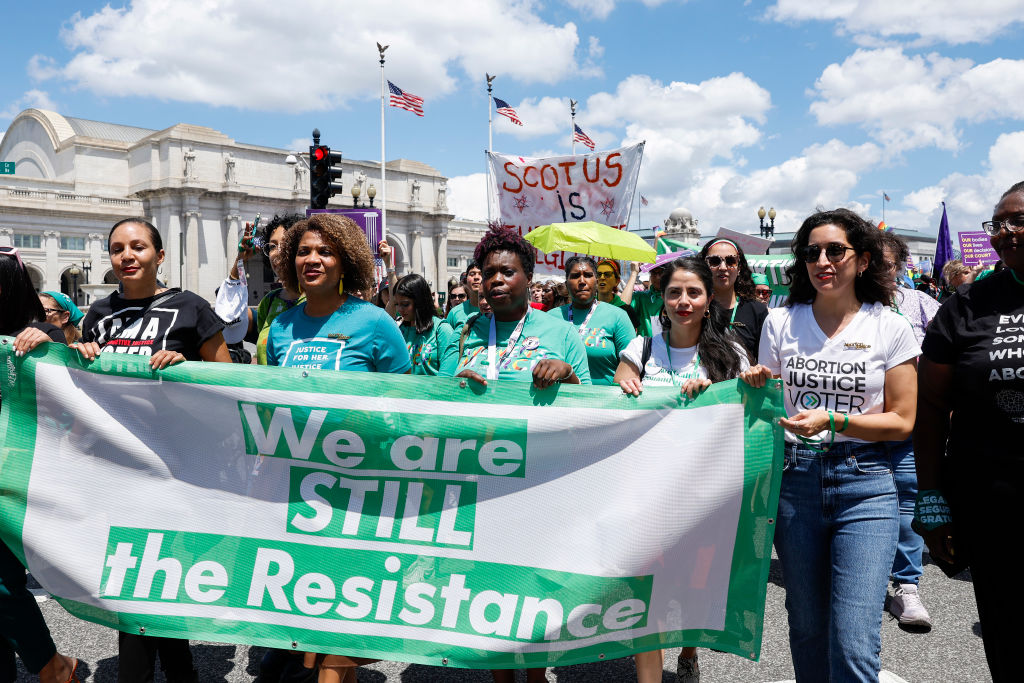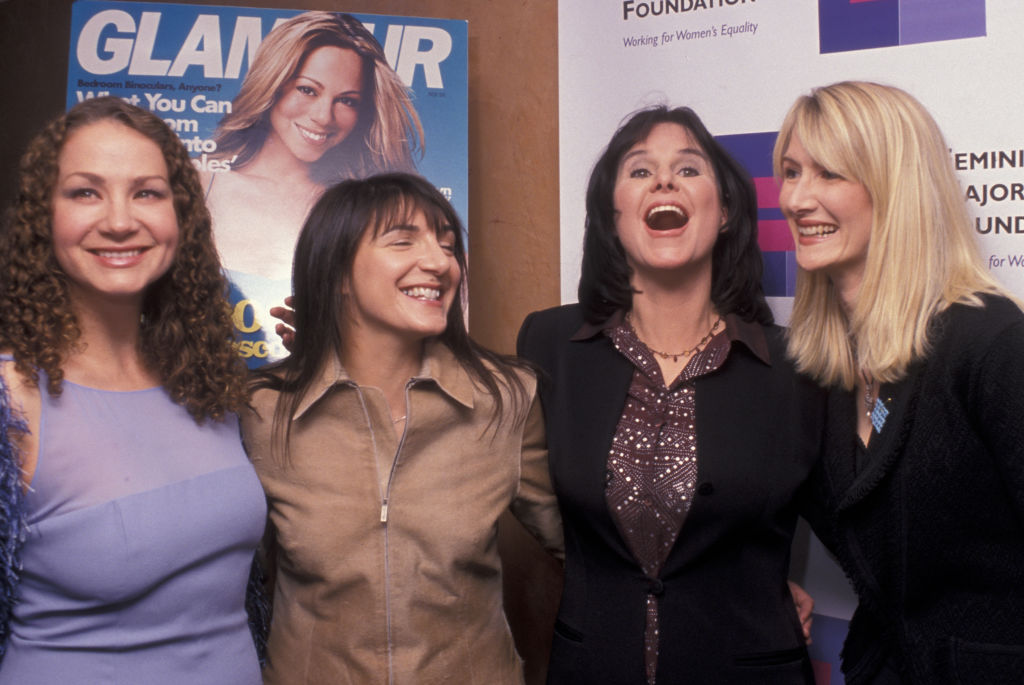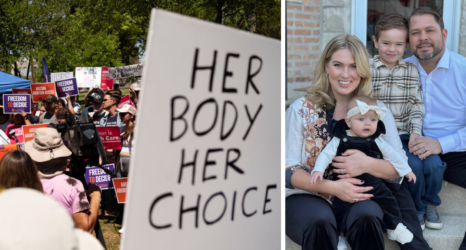If you perused most women’s media websites today, you’d have no idea that abortion rights are under attack, maternal mortality and infant mortality is on the rise, and Republicans are eyeing a nationwide abortion ban.

Perusing the happy headlines featured on women’s media sites, their readers would have no idea that abortion bans have demolished the rights of women in 21 states.
Nor that the maternal mortality rate has spiked in those states and that the number of newborns dying has shot up for the first time in 20 years. And that’s for babies, whose parents are from every background.
Neither have their audiences been informed about women who have lost their fertility when they were denied medical care after a miscarriage.
All of that news should be critically relevant to the 66 million American women of childbearing age (15-44), who may not realize that the dismantling of reproductive rights will affect them, no matter where they live in this country.
If Donald Trump is reelected in 2024, he will likely sign a national abortion ban. On the campaign trail, he has proudly bragged multiple times that he is responsible for ‘ending’ Roe v. Wade. However, it appears that the topic of abortion and all its repercussions can’t compete with the urgency of “How to Avoid Puffy Eyes” and “chrome red manicures,” in the world of female media. Sites focused on pregnancy merrily write about baby showers—not about trying to find an OB-GYN in maternity care ‘deserts,’ which are becoming more widespread, especially in Republican states.
It begs the question: Are women’s digital media site editors living in a Barbieland bubble? (To be clear, that’s Barbieland, pre-Barbie’s escape to real-life Malibu.)
Is ‘enlightened’ Barbie a more outspoken leader on serious women’s issues than the editors of female media?
When the editors leading women’s sites don’t prioritize coverage of reproductive rights—truly the biggest news affecting their audiences today—they aren’t using their platforms to stand up for their readers’ rights.
Right-wing politicians like Ron DeSantis rant about the “woke” media—yet most women’s sites today stick to “traditional” female topics: beauty, shopping, fashion, shopping, relationship issues and more shopping.
Republican politicians would be thrilled that leaders of the largest digital media sites for women have been silent on the recent Kate Cox abortion case in Texas. They have shared nothing with their readers about the 31-year-old mom, pregnant with an unviable fetus who faced severe risks to her health and future fertility yet was nevertheless denied the procedure by the Texas Supreme Court.
Fortunately, in the shrinking media world of women’s voices, there are still a few female-focused news outlets—like Teen Vogue, Jezebel, Ms., The 19th and The Mary Sue—which have covered the breaking news about the Kate Cox abortion controversy, as well as other developments on abortion bans, but they unfortunately have a smaller reach.
And yes, there are female influencers on TikTok and Instagram, speaking out forcefully for reproductive rights. But few are trained journalists reporting fact-based stories about women being denied abortions because they weren’t close enough to death, or about women bleeding heavily for days after a miscarriage when they weren’t able to get medical care—all thanks to these extreme laws.
When the editors leading women’s sites don’t prioritize coverage of reproductive rights—truly the biggest news affecting their audiences today—they aren’t using their platforms to stand up for their readers’ rights. Most women’s sites don’t even have a category on their menus which could contain stories about the assault on reproductive freedom.
It wasn’t always this way.
Before the digital age, women fought hard to lead the magazines that were supposed to serve their sex. Tens of millions of American women read a group of magazines geared toward homemakers and married women, known as the “Seven Sisters,” which focused heavily on cooking, keeping house and keeping husbands happy.
Finally, a group of feminists fed up with male editor-in-chiefs leading the “Seven,” invaded the office of Ladies Home Journal editor-in-chief John Mack Carter in 1970 and demanded that he be replaced by a woman, and that the magazine’s content be revamped to reflect the needs of the modern female.
Once female editors-in-chief took over, they used their bullhorns to celebrate women leaders (Glamour) and to assert that women could be in control of their own sex lives, money and careers (Cosmopolitan).

I later became editor-in-chief of Marie Claire, Cosmopolitan and Glamour, where we broke news on sexual harassment, breast cancer, eating disorders, the plight of women under the Taliban, and the restrictive abortion laws already creeping into red states at that time.
Other female editor-in-chiefs also covered women’s issues loudly, proudly and relentlessly.
Today some sites do excellent but only occasional features on abortion issues—like Cosmopolitan on the costs of getting an abortion in every state.
But when a woman’s body has become regulated by politicians, this is a DEFCON 3 situation requiring female digital media brands to unleash continuous coverage.
Past generations of strong female magazine editors-in-chief were restricted by their monthly publication schedule from providing immediate coverage of news events—like Kate Cox having to finally flee Texas to get an abortion. But I can easily imagine how these editors of the past would have been determined to use the digital platforms of today to amplify their voices on issues critical to women’s lives.
And how could news be any more critical for pregnant women than a new study by The Commonwealth Fund revealing that maternal death rates were 62 percent higher in 2020 in abortion-restricted states, than in those where abortion is legal. Why hasn’t that driven today’s editors-in-chief to send out red alarm alerts to their readers?
And why aren’t most women’s media reporting that OB-GYNs are fleeing states with abortion bans and that OB-GYN student residency applications are down over 10 percent in abortion ban states, according to the Association of American Medical Colleges? These states already have severe shortages of OB-GYNs. If medical students specializing in women’s health aren’t training there, the scarcity will get worse for pregnant women trying to find an OBGYN for prenatal care and delivery.
Why aren’t parenting sites shouting about this to their expectant moms?
I’m pleading with editors-in-chief of women’s sites to please get out of Barbieland. Barbie did.
You have the power to ensure that your readers are informed about the risks that extremist politicians are taking with their health. You can’t allow them to be blissfully ignorant and go about life as usual. They need to know which lawmakers are taking away their reproductive freedom. They need to know that this critically affects all of them, and that voting in 2024 is essential.
Isn’t it part of your mission—aside from serving up the best lingerie looks—to help save your readers’ reproductive freedom, and potentially their lives?
Up next:
U.S. democracy is at a dangerous inflection point—from the demise of abortion rights, to a lack of pay equity and parental leave, to skyrocketing maternal mortality, and attacks on trans health. Left unchecked, these crises will lead to wider gaps in political participation and representation. For 50 years, Ms. has been forging feminist journalism—reporting, rebelling and truth-telling from the front-lines, championing the Equal Rights Amendment, and centering the stories of those most impacted. With all that’s at stake for equality, we are redoubling our commitment for the next 50 years. In turn, we need your help, Support Ms. today with a donation—any amount that is meaningful to you. For as little as $5 each month, you’ll receive the print magazine along with our e-newsletters, action alerts, and invitations to Ms. Studios events and podcasts. We are grateful for your loyalty and ferocity.





